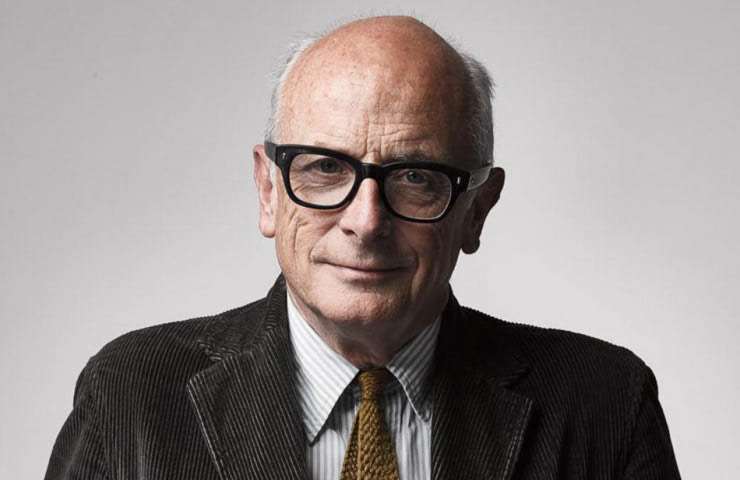13/11/2023
In a recent online discussion, an illustrious panel of experts came together to dissect the crucial role journalism plays in shaping the business of design.
Architects have traditionally used various forms of media to express themselves. Drawing, 2D and 3D modeling and even photography are just a few classic examples, but the potential of journalism in architectural communication remains mostly unexplored.
That was the main topic of discussion during the most recent installment of our Business of Design series. Organized by IE School of Architecture & Design, the online lecture assembled a prestigious panel to dive deeper into the theme Building the Narrative: Journalism’s Role in Architectural Communication.
A panel of experts
The Business of Design lecture series closely complements our Master in Business for Architecture and Design. It allows students to see firsthand how some of the most successful architects and design professionals make it work in a highly competitive industry.
The event was moderated by Peter Murray OBE, co-founder of the renowned New London Architecture (NLA) forum. With decades of experience in architecture, and design and branding for architectural firms around the world, he is one of the most important voices shaping the built environment today.
Joining him on stage were Rose Marshall, associate director at ING Media, the leading PR and communication agency for design and architecture professionals; Marisa Santamaría, a researcher, professor, journalist and curator who has collaborated with many leading brands and helps define contemporary movements and global trends in architecture, design and communication; and Jerónimo van Schendel Erice, co-founder and CEO at Bildia and the academic director for IE University’s Master in Business for Architecture and Design.
Changing public discourse
According to Peter, pioneers like Le Corbusier and Rem Koolhaas have used journalism to share revolutionary new ideas. Through publications like L’Esprit Nouveau and Delirious New York, respectively, they have shaped public discourse around modern architecture. This trend carries on today, with various new media channels coming to the fore: UK-based designer Thomas Heatherwick, for example, recently launched a massive campaign against what he calls “boring buildings” by leveraging the power of radio, widely distributed publications and evocative events geared toward the public.
Architectural writing, journalism and social media can impact how architecture is perceived by the wider public. – Peter Murray OBE
By engaging consistently with the wider public, he argues that architects and design professionals can fundamentally transform their businesses and operations.
But why is it so important to garner popular support, he asks? “Le Corbusier was very clear: L’Esprit Nouveau was a way for him to get in touch with clients. It was a good way for him to get work.” Similarly, OMA—The Office for Metropolitan Architecture—founded by Koolhaas in 1975, has a substantial marketing and publishing department that ensures a steady flow of clients.

“Their success, perhaps, is evidence that thought leadership and a public profile really do help to get work.” Peter Murray OBE
Journalism as a tool for business development
After many years of helping push innovative architects and designers into the spotlight, Rose Marshall understands just how pivotal good storytelling can be to our understanding of architecture. What she’s learned is that these professionals typically seek her services for a variety of reasons.
“Some want to be famous for doing great things and changing the world in a positive way.” Rose Marshall

However, most times, it’s the profit motive that wins out: “Ultimately, having third-party endorsement in the vein of journalistic coverage is a great way for them to get the credits they need to get in front of lots of potential clients.”
Rose sees journalism as a high-risk tool, but one that brings plenty of rewards, too. It allows built environment professionals to reach huge swathes of the population “very quickly and very easily,” allowing them to expand their networks and break into new markets. “If they want to become better known in the education sector,” for example, “We can create a campaign that highlights how the work they do is relevant to the clients commissioning those projects,” she expounds.
Attracting and retaining talent is another good reason to step into the public eye. From experience, Rose says, “Architecture is a very competitive landscape, and if you want to design the best buildings, you need the best designers on your team.” Journalism only makes it easier to make an impression with the right talent pool.
The power of ideas
Marisa Santamaría has an impressive portfolio that features numerous leading brands. Beyond the search for new clients, she believes architects and designers turn to journalism due to an inherent desire to connect.

“I detect a deep necessity to communicate, to transmit or create a narrative about who they are as a professional, what they want [to accomplish], and why they want to change society, their city or their own environment.” Marisa Santamaría
This is especially true in today’s technological and cultural context, where social media and other digital platforms are king, and fame there could mean all the difference for a studio’s success.
But there is another group of professionals that Marisa likes to focus on—those who simply want to transmit knowledge. “They are driven by another force: a desire to change society through ideas.”
What’s in a message?
This new breed of architects and designers is influenced mainly by the new “world of media” we live in. According to Jerónimo, newer generations have grown up immersed in many different digital channels, so they know just how important they are. They understand the value of messaging, harnessing its power to transform the business side of the built environment.
“[A message] is not an end, but a tool to improve the way in which we deliver value to society.” Jerónimo van Schendel Erice

Effective communication is one of the best ways for talented professionals to create spaces where they can put their knowledge to good use. For this reason, Jerónimo is determined to teach Master in Business for Architecture and Design students how to build a sophisticated media strategy that takes into account the most important channels, technologies and stakeholders in the industry.
He’s happy to see that, in recent years, architectural communication has moved from mere description to communicating through stories. “And behind those stories, there are ideas, pursuits and ideals that then materialize in different ways,” he says. This shift has done a lot to redefine the architect and their role in modern society.
“I believe that the best projects, where the output matches the stories behind them, are precisely those where communication [has been embedded into] the process.” That’s why he believes various forms of communication, from journalism to social media, will be an essential part of the architect’s or designer’s workflow in the coming years.
New challenges, new solutions
In the end, the panel agreed that the 21st century could spell the decline of the stereotypical ‘shy’ architect—the tiny studios that keep a pretty low profile and only tell their stories through books or exhibitions. The new landscape requires more personal forms of engagement, plus a focus on thought leadership and knowledge sharing, in order to assure greater exposure and thus, greater success.
You can watch this riveting discussion in its entirety here.








